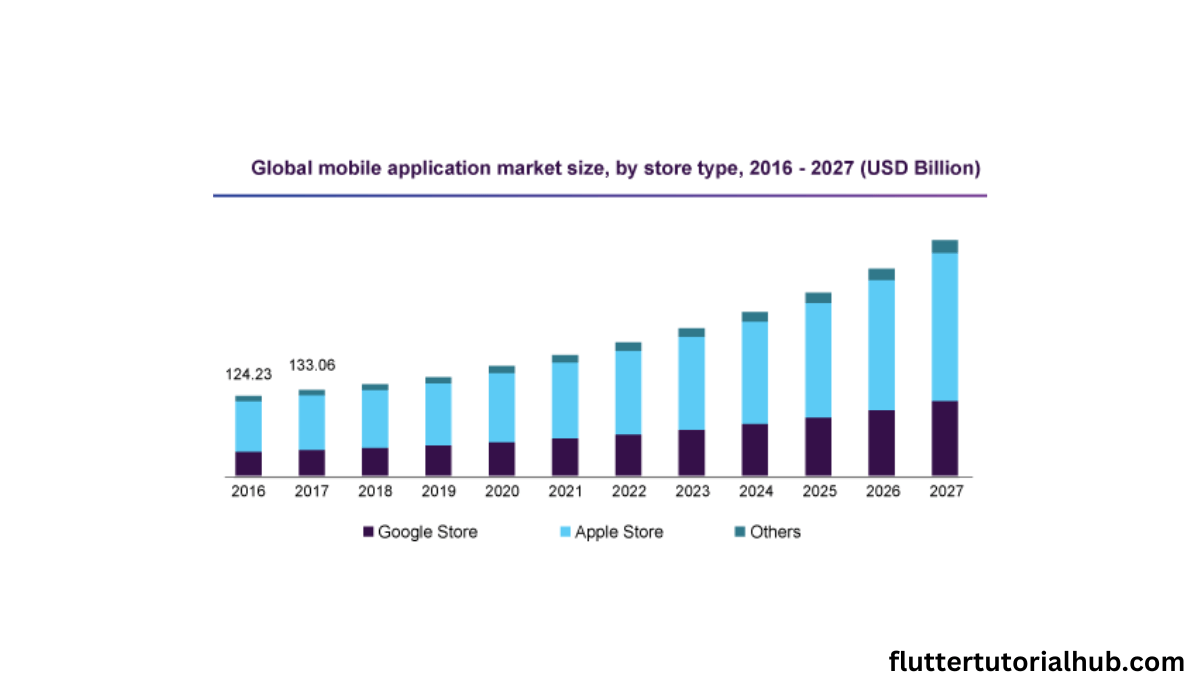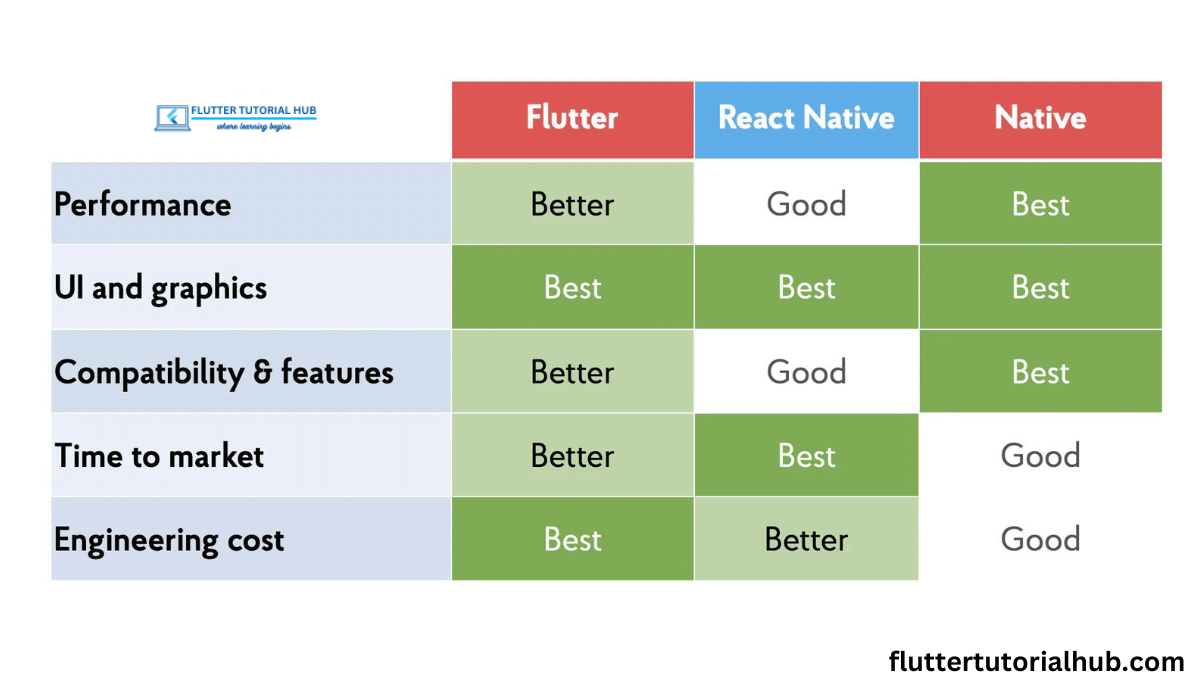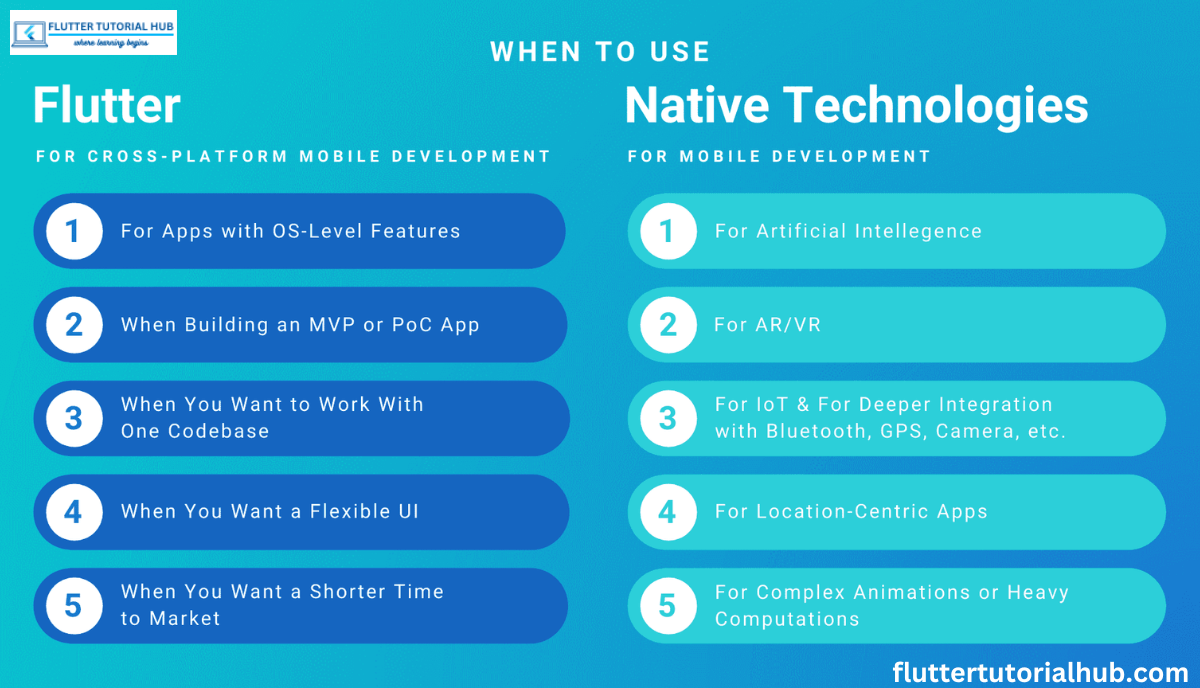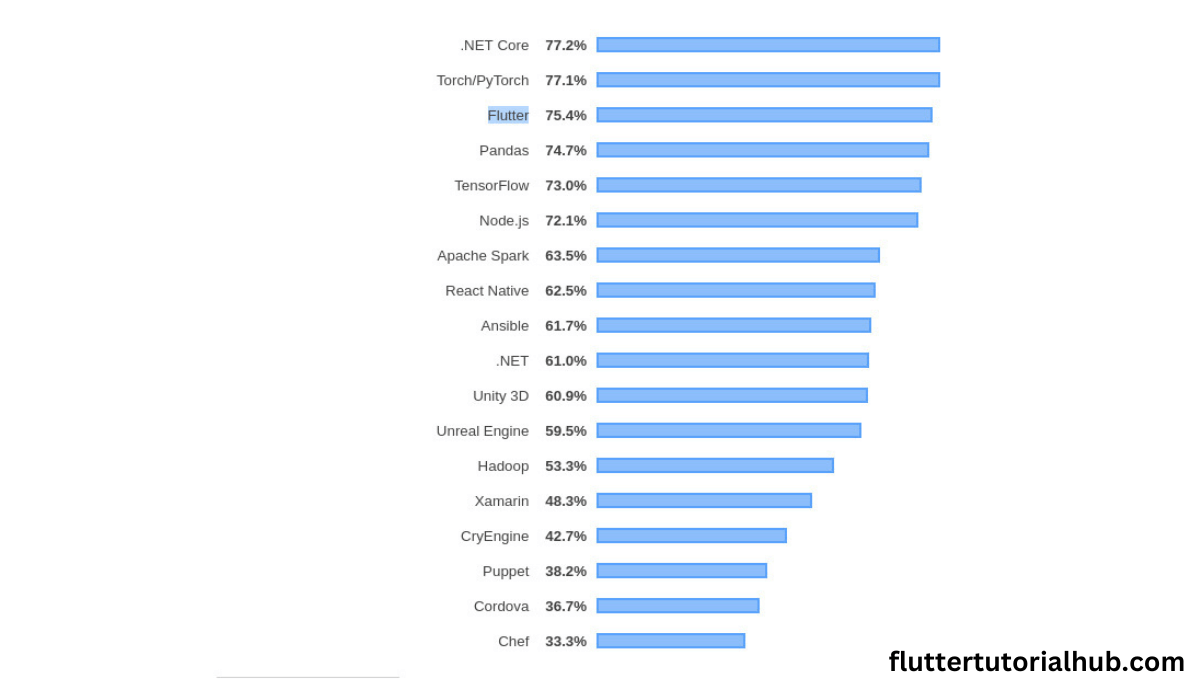We will discuss mobile app development history before knowing about “What is Flutter and Why You Should Learn It in 2025?”
History of Mobile App Development
In early 1990, mobile phones didn’t have mobile apps. They had basic features like calculator, calendar, and clock functions in Nokia phones and many other companies phones. Mobile app development was introduced in the late 90s, and then it will be more popular today in the world. Today we have so many platforms of mobile applications available, like Android, iOS, and many more. In this article, we will see one of the best frameworks about Flutter. Let’s jump into the world of flutter and introduce “what is flutter and why you should learn it?”.
Table of Contents

What is Flutter and Why You Should Learn It in 2025?
Flutter is a framework is introduced by Google. It allows us to create mobile applications for android, iOS, desktop and web. Dart is a programming language which is used in flutter to create high level application. It provides pre-design flutter widgets that make it easy to integration.
There are so many important features available in Flutter. We will see in detail below:
- Fast Development: Hot reload is a major feature in Flutter in which you can reflect your changes quickly before restarting the app. It seems to save time and resources on development. Ultimately, the development process will become fast.
- Beautiful UI: Flutter provides ready-to-use widgets to build responsive and customizable UIs.
- Native Performance: Flutter apps are compiled into native machine code, which provides high performance and smooth user experiences.
- Single Codebase: You can write a single code to support multiple platforms of mobile applications. You can support Android, iOS, web, and desktop apps.
- Access to Native Features: Flutter allows developers to access platform-specific features and APIs through its plugins, enabling integration with native functionalities.
- Strong Community: Flutter has a large community of developers, offering support, documentation, and a wealth of third-party packages and plugins.
Installing Flutter
You can install Flutter very easily in your system. You can visit the official Flutter website to install Flutter on Windows, MacOS, or Linux.
Flutter Tutorials and Resources
There are many resources available to help you get started with Flutter:
- Flutter tutorial for beginners: These tutorials are designed to teach the basics of Flutter and Dart. It helps to learn about mobile app development for beginners.
- Flutter desktop app tutorial: Learn how to create desktop apps with Flutter.
- Figma to Flutter: You can even convert designs made in Figma into Flutter code, making it easier for designers and developers to work together.
Using AdMob with Flutter
You can also monetize your Flutter app using Google AdMob to show ads in your app. This is a great way to earn money through your app by displaying rewarded video ads, banner ads, collapsible banner ads, and interstitial ads.
A Comprehensive Comparison: Flutter vs. React Native
Flutter and React Native have appeared as popular choices. It is making the choice between them challenging.

Flutter’s Native Performance Advantage
Dart Language and Ahead-of-Time (AOT) Compilation
Flutter uses the Dart programming language, which is designed for efficiency. AOT compilation translates the Dart code into native machine code, ensuring fast and efficient startup times on any platform.
Skia Graphics Engine
No Bridge to Native Components
Flutter doesn’t need a bridge to communicate with local parts.

Is learning Flutter worth it in 2025?
Why do I prefer Flutter to learn in the coming year? I will discuss some points below.

High Demand: Today Flutter is the most popular cross platform. Many IT companies prefer Flutter to build high-quality app development. Not only companies but also so many clients prefer this framework.
Cost and Time Efficiency: Working with Flutter apps reduces improvement time and fees. Businesses can reach a much wider target market with minimal effort.
Flexible skill: By learning Flutter, you will be able to do one set of skills that provide to build apps for multiple platforms.
Firebase (Real Time Database): Developers can use real time database, authentication & cloud messaging of their application. Firebase works as a powerful backend.
Conclusion
At the end of the article, if you are a newbie to programming languages and you are eager to learn programming languages to build mobile applications in 2025, I would definitely suggest you go with Flutter. Flutter is a powerful tool to build modern apps across multiple platforms using a single codebase. It is easy to teach dart programming languages to newbie developers. If you are really enjoying building mobile apps for yourself or a client, then learning Flutter is a smart choice.
Frequently Asked Questions
What is the language used by Google Flutter?
Dart is the programming language used by Google Flutter. Flutter uses the Dart programming language.
Why does Flutter use Dart and not another “better” language?
Flutter uses Dart as its primary programming language because a combination of features makes it better suited for programming purpose. While some developers claim that other languages can be better in certain aspects.
Dart Just-In-Time (JIT) compilation during development allows access to the powerful Flutter Hot Reload feature, enabling developers to detect code changes immediately without restarting the application The native machine code resulting from Dart ahead-of-time (AOT) compilation for production is , which provides fast and efficient startup time.
What programming language do I need to know before learning Google Flutter?
Before learning Google’s Flutter, you need to learn the Dart programming language.
How can I learn Flutter (Dart) without any prior programming knowledge of any kind?
Learning Flutter (Dart) without any prior programming knowledge might seem challenging, but with dedication and the right approach, it is certainly achievable.
First of all, you should start with any programming language like following steps.
(1) Understand the Basics of Programming (variables, data types, loops and conditionals)
(2) Learn Dart Fundamentals
(3) Dive into Flutter’s Documentation
(4) Take Online Courses and Tutorials
(5) Practice with Sample Projects
(6) Join Online Communities
(7) Attend Meet ups and Workshops
(8) Follow Flutter Blogs and YouTube Channels
(9) Seek Support from Online Platforms
(10) Be Patient and Persistent
Which language should I use for backend in Flutter?
There are so many languages you can use as a backend in Flutter. You can use Node.js, Python, Ruby, Java/Kotlin, Go, and PHP.
Is Flutter better than Kotlin/Java if you want to make Android apps only?
Deciding between Flutter and Kotlin/Java depends on the goals of your challenge and the knowledge of the development crew. If your consciousness is solely on Android app development and you have a crew with robust Kotlin or Java information, then sticking with those languages might also make feel.
However, if your assignment needs a transition that expands to another platform within the future, otherwise you want to use Flutter’s top class pre-built widgets and its hot reload function for quicker improvement cycles.
Which is easier to learn, React Native or Flutter in 2025? Which will also be more helpful in the future?
Using React Native, JavaScript and React.Js ought to be greater on hand to internet developers familiar with JavaScript. Its syntax and ideas are similar to internet development that is making the transition simpler. JavaScript community affords quite a few sources and aid for gaining knowledge of React Native.

I’m a Flutter and iOS developer, entrepreneur, and owner of fluttertutorialhub.com. I live in India, and I love to write tutorials and tips that can help other developers. I am a big fan of Flutter, FlutterFlow, iOS, Android, mobile application development, and dart programming languages from the early stages. I believe in hard work and consistency.
